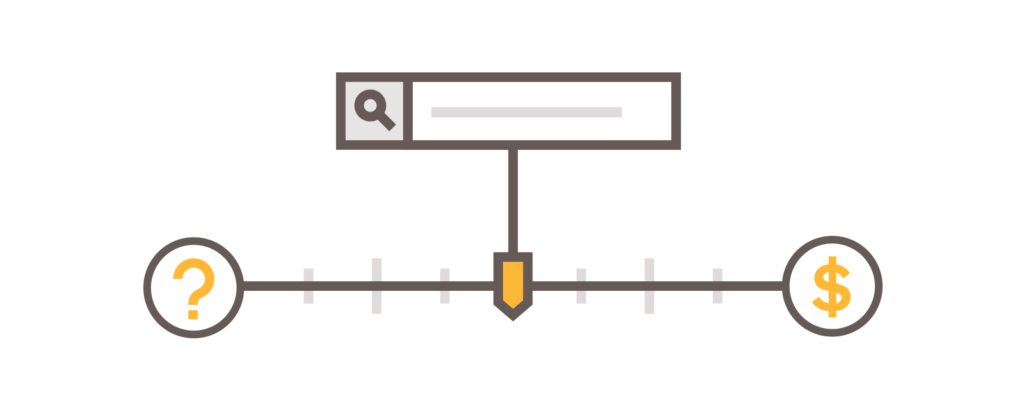What someone searches for online doesn’t just tell you the product or service they want. It also tells you where they are at in the buying process. Was your brand the first thing they thought of, or was it the last? Understanding how your customer buys can help you transition them from just looking to being a fully committed new customer.When someone buys your product or engages your service, they aren’t just buying the product or service itself — they’re buying whatever is going to solve their need. The key, then, is to understand the problem that your product or service solves and connect with them at just the right time.When a browser turns into a buyer, the keywords they type into the search engine will slide along a scale. At one end of the scale are the keywords related to the problem they’re having, but these keywords don’t indicate a particular solution. At the other end of the scale are keywords that specifically name your brand or product because they know you’re what they need.Let’s walk through an example together.

Pedro and his girlfriend Tatiana both know they’re in the mood for Italian. Tatiana says she’s been craving pasta after her friend posted like 20 pictures of the delicious pasta they ate from the new restaurant in town, and she’s always wanted to try to make it from scratch. They sit down with the laptop and search online using keywords like “homemade pasta,” “how to make fresh pasta,” and “make pasta from scratch.” Their browsing shows curiosity and initial discovery.After reading an article from the coolest pasta chef they could find, Pedro and Tatiana feel comfortable with their pasta-making technique. Now they need the right tools for the job. This stage is all about identifying and comparing their options, so they search “how to pick a pasta machine?” “pasta maker brands,” and “the best pasta maker.”

They can see that are a few different choices and styles, and they're leaning toward the Marcato brand. Pedro and Tatiana want to gather more information to make the right decision and feel confident about their purchase. They look up “does the Marcato Atlas Wellness 150 Pasta Maker really work,” “reviews about the Marcato Atlas Wellness 150,” “is the Marcato Atlas Wellness 150 good quality,” and “Marcato Atlas Wellness 150 bad reviews.”Pedro and Tatiana decide that the Marcato Atlas Wellness 150 Pasta Maker is the one for them. Pedro then searches “where can I buy the Marcato Atlas Wellness 150 in Edmonton?” It’s clear that they know what they want and are taking steps to get it. Pedro and Tatiana buy their pasta maker, cook up their favourite recipe, pull up the series they’ve been glued to on Netflix, and share their ultimate pasta creation.

By considering the keywords people are searching for and their relationship to our product or service, we can pinpoint exactly where they are in the buyer’s journey. We can then use these keywords and our understanding of where someone is at in the process to help us improve our brand. Here are just a few ways to do that.
- Improve your ranking in search engines by optimizing your web content to reflect high-converting keywords.
- Optimize your user experience to present the right info to your customer at the right time.
- Optimize your paid search campaign by bidding more on keywords that you value and less on words and phrases you don’t.
- Use your understanding of your customer to develop your core messaging for your next marketing campaign.
Think about your customers and at what point you think they’ll consider your brand as their solution. Discovering trends in your customers’ motivations and pain points through the keywords they use to browse online can help you make educated decisions about your marketing. It’s also the key to reaching the right people in the right place at the right time.